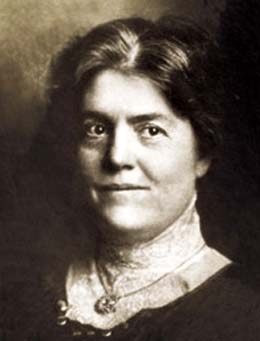On January 13, 1913, women enter the Washington State Legislature for the first time when Frances C. Axtell (1866-1953) and Nena Jolidon Croake (1865-1934) take the oath of office along with 95 male colleagues in the House of Representatives on the opening day of the state's 13th legislative session. The two women were elected in November 1912 in the first state elections after Washington women gained the right to vote in 1910. Axtell is a Republican representing a Whatcom County district. Croake, from Pierce County, is one of a large number of Progressives elected in 1912. Each will serve only one term, but they will be followed by increasing numbers of women in the state House and then the state Senate and eventually higher offices, including the United States Congress.
Woman Suffrage
Women in Washington Territory had briefly had the right to vote, but when Washington gained statehood in 1889, the (all male) delegates to the state constitutional convention passed the issue of woman suffrage to the all male electorate that voted on the proposed constitution and the suffrage proposal lost by a wide margin. However, the suffrage movement gained momentum in the early years of the twentieth century, and was boosted in Washington when in July 1909 the state's first world's fair, the Alaska-Yukon-Pacific (A-Y-P) Exposition, hosted the Annual Convention of the National American Woman Suffrage Association and celebrated Woman Suffrage Day at the fair. The following year, 10 years before U.S. Constitution was amended to give women the vote, the state's male voters approved a suffrage amendment to the state constitution in November 1910.
In the very next statewide election, on November 5, 1912, Frances Axtell and Nena Jolidon Croake became the first women elected to the state legislature. Like many leaders in Washington's early history, they had moved to Washington from the eastern U.S. In this case, coincidentally, both Axtell and Croake were born in Illinois. Both had advanced degrees. Axtell earned a Ph.D at DePaul University before moving to Bellingham. Croake was a doctor of osteopathy who had been a leader in the suffrage movement.
Axtell, running as a Republican, won her seat when she came in second in a three-person race for the two House of Representatives seats in the 54th District representing Bellingham. Croake was elected on the Progressive ticket in the 37th District representing Tacoma by placing second in a six-person race for that district's two House seats. She was one of many Progressives elected to the legislature in the unusual election of 1912, when former president Theodore Roosevelt (1858-1919) split with President William Howard Taft (1857-1930) and left the Republicans to head the Progressive or "Bull Moose" ticket.
A Place in the House
Croake and Axtell officially entered the House of Representatives on the first day of the session, January 13, 1913, when Stephen J. Chadwick, an associate justice of the state Supreme Court, administered the oath of office to them and their colleagues. The swearing in was followed by the election of the Speaker of the House. Normally the majority party chose the Speaker, but with four parties holding seats (there was one Socialist), no one party had a majority. The Progressives hoped to gain the support of all the Democrats and the Socialist to elect a progressive Speaker. However, Democrats chose to vote with the Republicans to re-elect King County Republican Howard D. Taylor as Speaker. Reflecting the fluid nature of party labels at the time, although Axtell had run as a Republican, she joined Croake and most of the Progressives in supporting their unsuccessful candidate for Speaker.
Both Axtell and Croake were recognized as reformers during their term in the House. Axtell introduced public-safety legislation and Croake submitted a bill to improve conditions for working women. Neither of the pioneering women legislators attained influential positions in the House and neither won a second term. Axtell ran for election to the state senate in 1914, this time under the Progressive banner. However, the Progressives were considerably less successful than they had been two years earlier and she lost. (However, in 1917 she would become the first woman appointed to a federal commission in U.S. history.) Croake did not seek re-election but continued with her osteopathic practice in Tacoma until 1923.
And in the Senate
No women were elected to the legislature in 1914. However, that election was the last in which no woman won a legislative race. In 1916, Ina P. Williams was elected to the House from Yakima County, and she was followed by Frances M. Haskell (Pierce County) in 1918 and Anna K. Colwell (Snohomish County) in 1920. Each served only one term and was the only woman in the legislature during her term. However, in 1922, four women were elected to the House, and Reba Hurn (1881-1967) became the first woman elected to the state Senate.
From that point on, the number of women elected to the legislature grew steadily, especially in the House, through the 1960s. The 1970s and 1980s saw rapid increases in the number of women in both chambers and a steady expansion of the leadership positions they held. In 1981 Jeannette Hayner (1919-2010) of Walla Walla became the first woman to be Senate Majority Leader. No woman has yet (as of 2009) been Speaker of the House of Representatives, the top post in that chamber. However, the legislature has served as a political launching pad for many women who have gone on to higher office. The first two women elected to the United States Congress from Washington -- Catherine May (1914-2004) in 1958 and Julia Butler Hansen (1907-1988) in 1960 -- were both state legislators. Washington's U.S. Senators in 2009, Patty Murray (b. 1950) and Maria Cantwell (b. 1958), the first two women to hold that position, were also veterans of the legislature.

